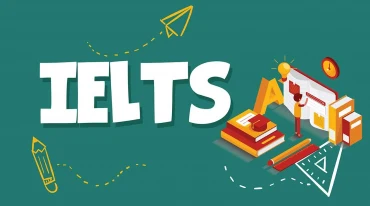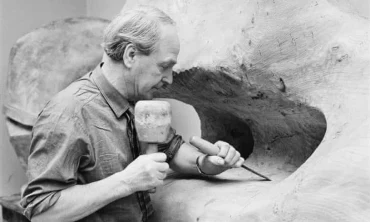
- 357 Lê Hồng Phong, P.2, Q.10, TP.HCM
- Hotline 1: 1900 7060
Hotline 2: (028) 3622 8849
Bài tập IELTS Reading: Trash Talk - Phân tích từ vựng
Cùng diễn đàn giải một bài tập IELTS Reading với dạng bài điền từ vào chỗ trống và phân tích các từ vựng mới có trong bài nhé!
Trash Talk
Sorting through a mountain of pottery to track the Roman oil trade
(A) In the middle of Rome’s trendiest neighborhood, surrounded by sushi restaurants and nightclubs with names like Rodeo Steakhouse and Love Story, sits the ancient world’s biggest garbage dump—a 150-foot-tall mountain of discarded Roman amphoras, the shipping drums of the ancient world. It takes about 20 minutes to walk around Monte Testaccio, from the Latin testa and Italian cocci, both meaning “potsherd.” But despite its size—almost a mile in circumference—it’s easy to walk by and not really notice unless you are headed for some excellent pizza at Velavevodetto, a restaurant literally stuck into the mountain’s side. Most local residents don’t know what’s underneath the grass, dust, and scattering of trees. Monte Testaccio looks like a big hill, and in Rome people are accustomed to hills.
(B) Although a garbage dump may lack the attraction of the Forum or Colosseum, I have come to Rome to meet the team excavating Monte Testaccio and to learn how scholars are using its evidence to understand the ancient Roman economy. As the modern global economy depends on light sweet crude, so too the ancient Romans depended on oil—olive oil. And for more than 250 years, from at least the first century A.D., an enormous number of amphoras filled with olive oil came by ship from the Roman provinces into the city itself, where they were unloaded, emptied, and then taken to Monte Testaccio and thrown away. In the absence of written records or literature on the subject, studying these amphoras is the best way to answer some of the most vexing questions concerning the Roman economy—How did it operate? How much control did the emperor exert over it? Which sectors were supported by the state and which operated in a free market environment or in the private sector?
(C) Monte Testaccio stands near the Tiber River in what was ancient Rome’s commercial district. Many types of imported foodstuffs, including oil, were brought into the city and then stored for later distribution in the large warehouses that lined the river. So, professor, just how many amphoras are there?” I ask José Remesal of the University of Barcelona, co-director of the Monte Testaccio excavations. It’s the same question that must occur to everyone who visits the site when they realize that the crunching sounds their footfalls make are not from walking on fallen leaves, but on pieces of amphoras. (Don’t worry, even the small pieces are very sturdy.) Remesal replies in his deep baritone, “Something like 25 million complete ones. Of course, it’s difficult to be exact,” he adds with a typical Mediterranean shrug. I, for one, find it hard to believe that the whole mountain is made of amphoras without any soil or rubble. Seeing the incredulous look on my face as I peer down into a 10-foot-deep trench, Remesal says, “Yes, it’s really only amphoras.” I can’t imagine another site in the world where archaeologists find so much—about a ton of pottery every day. On most Mediterranean excavations, pottery washing is an activity reserved for blisteringly hot afternoons when digging is impossible. Here, it is the only activity for most of Remesal’s team, an international group of specialists and students from Spain and the United States. During each year’s two-week field season, they wash and sort thousands of amphora handles, bodies, shoulders, necks, and tops, counting and cataloguing, and always looking for stamped names, painted names, and numbers that tell each amphora’s story.
(D) Although scholars worked at Monte Testaccio beginning in the late 19th century, it’s only within the past 30 years that they have embraced the role amphoras can play in understanding the nature of the Roman imperial economy. According to Remesal, the main challenge archaeologists and economic historians face is the lack of “serial documentation,” that is, documents for consecutive years that reflect a true chronology. This is what makes Monte Testaccio a unique record of Roman commerce and provides a vast amount of datable evidence in a clear and unambiguous sequence. “There’s no other place where you can study economic history, food production and distribution, and how the state controlled the transport of a product,” Remesal says. “It’s really remarkable.”
Questions 1-5
Complete the sentences below.
Write NO MORE THAN THREE WORDS from the passage for each answer.
Write your answers in boxes 1–5 on your answer sheet.
1. It is unknown for _____ what’s underneath the grass, dust, and scattering of trees.
2. Monte Testaccio stands near the ancient Rome’s _____
3. Remesal doesn't believe that the whole mountain is made of _____ without any soil or rubble.
4. Remesal’s team washes and sorts thousands of amphoras each year’s two-week _____
5. _____ started working at Monte Testaccio in the late 19th century.
ANSWER KEY
Most local residents
Commercial district
Amphoras
Field season
Scholars
TỪ VỰNG TRONG BÀI
Circumference /sɚˈkʌm.fɚ.əns/ (n): chu vi (the line surrounding a circular space, or the length of this line)
Excavate /ˈek.skə.veɪt/ (v): khai quật (to remove earth that is covering very old objects buried in the ground in order to discover things about the past)
Amphora /ˈæm.fɚ.ə/ (n): một loại công te nơ có đáy nhọn (a long, narrow clay container with two handles, wider at the top than at the base, that was used in ancient times especially for storing oil or wine)
Vexing /ˈvek·sɪŋ/ (adj): bất bình, làm phật ý
Emperor /ˈem.pɚ.ɚ/ (n): hoàng đế (a male ruler of an empire)
Baritone /ˈber.ə.toʊn/ (n): giọng nam trung ((a man with) a singing voice that is lower than a tenor but not as low as a bass, or a musical instrument with this range)
Incredulous /ɪnˈkredʒ.ə.ləs/ (adj): không tin, hoài nghi (not wanting or not able to believe something, and usually showing this)
Peer /pɪr/ (v): nhìn chăm chú (to look carefully or with difficulty)
Nguồn: IELTS Up
THƯ VIỆN LIÊN QUAN

Reading là một trong bốn phần thi bắt buộc của bài thi IELTS, đây cũng được xem là phần thi thử thách nhất để chinh phục được band điểm cao. Hãy...

Bài viết cung cấp cho đọc giả Bài tập Reading part 3 - Chủ đề: Why fairy tales are really scary tales - Có đáp án

Bài viết cung cấp cho đọc giả Bài tập Reading part 2 - Chủ đề: The Desolenator: producing clean water - Có đáp án

Bài viết cung cấp cho đọc giả Bài tập Reading part 1 - Chủ đề: Henry Moore (1898-1986) - Có đáp án
Hoặc gọi ngay cho chúng tôi:
1900 7060
 | Chính sách bảo mật thông tin | Hình thức thanh toán | Quy định chung
| Chính sách bảo mật thông tin | Hình thức thanh toán | Quy định chung
Giấy chứng nhận đăng ký doanh nghiệp số 0310635296 do Sở Kế hoạch và Đầu tư TPHCM cấp.
Giấy Phép hoạt động trung tâm ngoại ngữ số 3068/QĐ-GDĐT-TC do Sở Giáo Dục và Đào Tạo TPHCM cấp